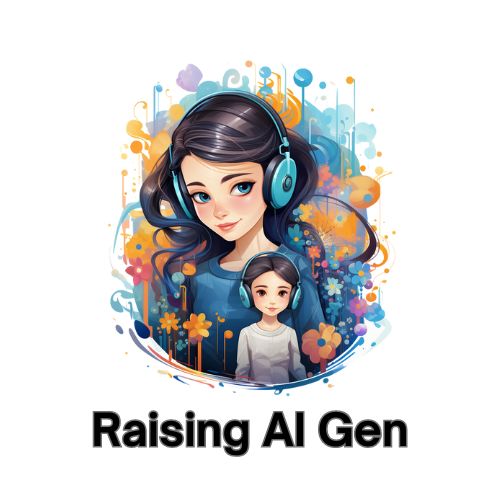Unlock the future of speech rehabilitation with AI Speech Therapy!
Dive into a world where technology meets linguistic excellence, paving the way for groundbreaking advancements in speech therapy.
As the veil lifts, discover a landscape where Artificial Intelligence (AI) isn’t just a buzzword, but a catalyst for enhancing the quality of life for individuals with speech disorders.
The voyage into the realm of AI Speech Therapy not only beckons the curious but promises a horizon of boundless possibilities and hope.
In recent years, the healthcare sector has embraced Artificial Intelligence (AI) to augment various domains, one of which is speech and language therapy.
AI Speech Therapy refers to the incorporation of AI technologies into the realm of speech therapy to facilitate enhanced treatment outcomes and accessibility.
The fusion of AI’s computational prowess with the nuanced understanding of human speech and language disorders has spearheaded a new era of therapeutic interventions.
This innovative approach aims at addressing the global shortage of speech-language pathologists and making speech therapy services more accessible, especially in remote and underserved areas.
As the technological landscape continues to evolve, the intertwining of AI with speech therapy is becoming more profound, offering a plethora of benefits to both clinicians and patients.
From streamlining clinical documentation to providing personalized treatment plans based on data-driven insights, AI is reshaping the way speech therapy services are delivered.
The essence of AI Speech Therapy lies in its ability to provide a supportive environment for individuals to improve their speech, empowering them to communicate more effectively and lead a better quality of life.
Moreover, the ethical considerations associated with AI in speech therapy ensure that the technology is deployed responsibly, adhering to the principles of fairness, privacy, and data security.
Key Takeaways
Impact Area Description Accessibility AI broadens the reach of speech therapy services to remote and underserved populations, ensuring that more individuals have access to the crucial support they need. Clinical Efficiency By automating mundane tasks and providing objective assessment tools, AI empowers clinicians to focus more on patient interaction and personalized treatment planning. Ethical Practice Adhering to ethical guidelines, AI in speech therapy ensures fairness in assessments, safeguards privacy, and maintains data security, fostering trust and accountability. Real-world Applications Case studies and real-world applications illustrate the transformative impact of AI in speech therapy, showcasing tangible benefits and improved patient outcomes. Future Prospects The continuous evolution of AI promises a future where speech therapy is more effective, personalized, and accessible, transcending geographical and linguistic barriers.
This article delves deeper into the technological underpinnings, real-world applications, ethical considerations, and the future of AI in speech therapy, aiming to provide a comprehensive understanding of this revolutionary intersection of technology and healthcare.
The Journey of AI in Speech Therapy
The fusion of Artificial Intelligence (AI) with speech therapy isn’t a sudden phenomenon but a progressive amalgamation over years, fueled by the relentless endeavors of researchers, clinicians, and technologists.
This section traverses through the chronological evolution of AI’s role in speech therapy and highlights some landmark projects and studies that have significantly contributed to the field.
Historical Evolution
The inception of AI in speech therapy can be traced back to the early applications of computer technology in healthcare.
Over the years, as AI technologies like Machine Learning (ML) and Natural Language Processing (NLP) matured, their application in speech therapy began to unfold. Here are some pivotal moments in this evolutionary journey:
- Early 2000s: Initial exploration of digital tools for speech therapy.
- Late 2000s: Emergence of speech recognition systems to assist in therapy.
- Early 2010s: Adoption of Machine Learning algorithms for speech assessment.
- Mid-2010s: Development of personalized therapy plans using AI algorithms.
- Late 2010s and Beyond: Integration of AI in mobile apps and teletherapy platforms, widening the accessibility and efficiency of speech therapy services.
Stimulus from Notable Grants and Research Projects
One of the hallmark projects that garnered attention is the initiative taken by researchers at Syracuse University, backed by a $2.5 million grant from the National Institutes of Health. The project titled, “Intensive Speech Motor Chaining Treatment and Artificial Intelligence Integration for Residual Speech Sound Disorders,” aims to refine a clinically intuitive automated system to ameliorate the treatment for speech sound disorders, consequently addressing the global shortage of speech-language clinicians.
Here are some highlights of the project:
- Project Goal: Improve treatment for speech sound disorders using AI.
- Primary Investigator: Associate Professor Jonathan Preston.
- AI Application: Creation of an automated system mimicking a clinician’s judgment to provide high-quality practice for learners between clinician sessions.
- Ethical AI: Ethical considerations are embedded into the system to ensure fairness in assessments.
Furthermore, the project underlines the importance of ethical AI, ensuring fairness in assessments irrespective of age, sex, and other demographic factors.
It’s a vivid exemplification of how meticulously designed AI systems can significantly contribute to addressing the challenges faced by the speech therapy sector.
Bridging The Knowledge Gap
The essence of these advancements isn’t confined to the academic or clinical community but extends to the general populace.
Through educational content, individuals, parents, and educators are becoming more cognizant of how AI is reshaping speech therapy, which is instrumental in destigmatizing speech disorders and encouraging more individuals to seek therapy.
The Technological Underpinning
Delving into the realm of AI Speech Therapy necessitates an understanding of the core technologies that serve as the linchpin for this integration.
These technologies not only form the foundation of AI-based speech therapy applications but also drive the continuous advancements in this field.
Machine Learning (ML) and Natural Language Processing (NLP)
Machine Learning and Natural Language Processing are two paramount technologies that power the AI algorithms used in speech therapy.
- Machine Learning (ML):
- ML algorithms learn from data to identify patterns and make predictions or decisions.
- In speech therapy, ML can be used to analyze speech patterns, assess speech disorders, and tailor personalized therapy plans.
- Natural Language Processing (NLP):
- NLP, a subset of AI, focuses on the interaction between computers and human language.
- It enables the machine to understand, interpret, and generate human language in a valuable manner, which is crucial for effective speech therapy.
These technologies collectively contribute to the development of sophisticated tools and applications that can significantly enhance the delivery and effectiveness of speech therapy.
AI-Powered Speech Analysis and Feedback
A cornerstone of AI in speech therapy is its ability to provide real-time analysis and feedback.
For instance, AI-powered software like the ChainingAI developed by researchers at Syracuse University, provides immediate feedback on speech sounds, helping individuals to correct their pronunciation and improve their speech over time.
Here’s how the AI-powered speech analysis and feedback mechanism works:
- Speech Analysis:
- AI algorithms analyze the speech input to identify correctly and incorrectly pronounced sounds.
- They convert audio from speech sounds into recognizable numeric patterns.
- Real-time Feedback:
- The software provides audio feedback, announcing “correct” or “not quite” based on the analysis.
- It also offers visual feedback like tongue-position reminders and tongue-shape animations to reinforce proper pronunciation.
Enhancing Accessibility and Remote Therapy
The integration of AI technologies into mobile apps and teletherapy platforms has made speech therapy more accessible, particularly for those residing in remote areas or having limited mobility.
AI not only bridges the geographical gap but also transcends the traditional boundaries of speech therapy, offering a more flexible and convenient mode of treatment.
- Mobile Apps: Various mobile applications now integrate AI to provide on-the-go speech therapy services.
- Teletherapy Platforms: AI-enhanced teletherapy platforms allow for remote therapy sessions, making speech therapy accessible irrespective of geographical constraints.
The infusion of AI in speech therapy is a classic exemplification of how technology can be harnessed to enhance healthcare accessibility and efficacy, thereby promising a better quality of life for individuals with speech disorders.
AI’s Impact on Speech Therapy Accessibility
The integration of Artificial Intelligence (AI) in the domain of speech therapy has been a game-changer, especially in terms of accessibility.
This section elucidates how AI is bridging the accessibility gap in speech therapy, making it more available to individuals across different geographies and circumstances.
Addressing the Global Shortage of Speech-Language Clinicians
One of the major challenges in the field of speech therapy has been the global shortage of qualified speech-language pathologists.
AI comes as a beacon of hope to mitigate this issue by automating certain aspects of therapy, thus extending the reach of existing clinicians to a larger patient base.
- Automated Assessments: AI can automate initial assessments, saving clinician time and expediting the treatment process.
- Virtual Therapy Sessions: AI-powered virtual therapy sessions allow clinicians to reach patients in remote or underserved areas.
- Enhanced Efficiency: AI streamlines the documentation process, allowing clinicians to focus more on patient care.
Remote and Virtual Speech Therapy Sessions
The advent of AI has been instrumental in facilitating remote and virtual speech therapy sessions, thereby overcoming geographical barriers.
- Teletherapy Platforms: AI-powered teletherapy platforms enable real-time interaction between clinicians and patients, regardless of their location.
- Mobile Applications: Various mobile applications integrated with AI provide on-the-go speech therapy services, making therapy more accessible and convenient.
Digital transformation in speech therapy has not only made services more accessible but also more engaging and effective.
Overcoming Language and Dialect Barriers
AI has the potential to transcend language and dialect barriers in speech therapy.
With multilingual and dialect-sensitive AI algorithms, speech therapy can cater to a more diverse populace.
- Multilingual Support: AI algorithms can be trained to understand and interact in multiple languages, making speech therapy accessible to non-English speakers.
- Dialect Sensitivity: Tailoring AI algorithms to be sensitive to different dialects ensures more accurate assessments and personalized therapy plans.
The synergy between AI and speech therapy is progressively eliminating the barriers to accessing quality speech therapy services.
This leap towards more accessible speech therapy is not just a stride towards better healthcare services, but a leap towards a more inclusive and equitable healthcare ecosystem.
Ethical Considerations
In the quest for innovation, the ethical aspects of integrating Artificial Intelligence (AI) in speech therapy are paramount.
As AI begins to play a more significant role in healthcare, ensuring that its implementation adheres to ethical guidelines is crucial for building trust and ensuring the welfare of individuals.
This section explores the ethical considerations associated with AI in speech therapy.
Fairness in Assessments
Ensuring fairness in assessments is a critical aspect of ethical AI implementation in speech therapy.
The algorithms should be designed to provide unbiased assessments regardless of an individual’s age, gender, ethnicity, or linguistic background.
- Bias Detection: Implementing mechanisms to detect and mitigate biases in AI algorithms.
- Inclusive Training Data: Utilizing diverse datasets for training AI algorithms to ensure they are representative of the broader population.
Privacy Concerns
The privacy of individuals’ data is a significant concern, especially when dealing with sensitive health-related information.
- Data Encryption: Employing robust data encryption techniques to safeguard individuals’ data.
- Anonymization: Anonymizing data to protect individuals’ identities while still allowing for meaningful analysis.
- Informed Consent: Ensuring individuals are well-informed about how their data will be used and obtaining their consent before proceeding.
Data Security
Maintaining data security is imperative to protect sensitive information from unauthorized access or breaches.
- Secure Data Storage: Utilizing secure and encrypted data storage solutions.
- Regular Security Audits: Conducting regular security audits to identify and address potential vulnerabilities.
- Compliance with Regulations: Adhering to healthcare data security regulations like HIPAA (Health Insurance Portability and Accountability Act).
Through awareness and education, individuals, clinicians, and policymakers can work together to ensure that the deployment of AI in speech therapy remains ethical, responsible, and aligned with the broader goal of enhancing individuals’ wellbeing.
The ethical considerations aren’t mere hurdles but essential stepping stones towards a more trustworthy and reliable AI-enhanced speech therapy landscape.
Real-world Applications
The theoretical discourse surrounding AI in speech therapy is robust, but the true measure of its impact lies in its application in the real world.
This section elucidates some compelling real-world applications of AI in speech therapy, illustrating how it’s making a tangible difference in people’s lives.
Case Studies Showcasing Real-world Impact
The application of AI in speech therapy has already started yielding positive results. Below are some case studies that illuminate the real-world impact:
- Project Euphonia by Google: This initiative aims to make speech technology more accessible to people with speech impairments. Through extensive data collection and AI analysis, Project Euphonia is working towards creating communication solutions for individuals with speech disorders.
- Syracuse University’s Project: The university’s project, backed by a substantial grant, is working on integrating AI to provide intensive speech motor chaining treatment for individuals with residual speech sound disorders.
Challenges and The Way Forward
While the journey has been promising, it’s not devoid of challenges.
However, these challenges are part of the roadmap towards refining and optimizing AI applications in speech therapy.
- Data Privacy and Security: As previously discussed, ensuring data privacy and security is paramount.
- Algorithmic Bias: Working towards eliminating biases in AI algorithms to ensure fair and accurate assessments.
- Cost of Implementation: Addressing the costs associated with implementing sophisticated AI technologies in speech therapy, ensuring it’s accessible to all.
Through continuous research, collaboration, and a patient-centric approach, the path ahead looks promising.
With each success story and every challenge overcome, the domain of speech therapy is inching closer towards a future where quality care is accessible to all, irrespective of geographical or financial barriers.
The real-world applications of AI in speech therapy underscore the potential of technology to transform lives, one word at a time.
Future of AI in Speech Therapy
The horizon of AI in speech therapy is vast with a promise of revolutionary advancements. As technology continues to evolve, the potential for further integration and new discoveries in this domain is boundless.
This section peeks into the future, exploring the realms AI could venture into within the sphere of speech therapy.
Expanding AI Applications
The applications of AI in speech therapy are set to broaden, extending beyond the current paradigms.
- Different Speech Sounds: The development of AI algorithms capable of recognizing and analyzing a wider array of speech sounds, aiding in the diagnosis and treatment of a broader range of speech disorders.
- Dialects and Languages: Multilingual AI algorithms and dialect-sensitive models will make speech therapy accessible to a diverse populace, transcending linguistic barriers.
Bridging Geographical and Linguistic Gaps
With advancements in AI, the goal of making speech therapy accessible regardless of geographical and linguistic barriers is within reach.
- Teletherapy Enhancement: Further enhancements in AI-powered teletherapy platforms to provide high-quality remote therapy experiences.
- Mobile App Innovations: Continuous innovation in mobile applications to provide effective on-the-go speech therapy solutions.
The digital transformation spearheaded by AI is paving the way for a more inclusive and accessible speech therapy landscape.
Collaborative Research and Development
The future of AI in speech therapy also hinges on collaborative research and development efforts.
- Interdisciplinary Collaboration: Collaboration between AI experts, speech-language pathologists, and other stakeholders to drive innovation.
- Open-source Projects: Encouragement of open-source projects to foster a community-driven approach towards solving challenges in AI speech therapy.
The collaborative efforts will fuel the continual evolution of AI applications in speech therapy, ensuring that the technology remains aligned with the goal of enhancing patient care and outcomes.
The trajectory of AI in speech therapy is an inspiring narrative of how technology, when harnessed with a patient-centric approach, can significantly contribute to improving the quality of life for individuals with speech disorders.
The possibilities are endless, and the future holds promise for further groundbreaking innovations that will continue to redefine the landscape of speech therapy.
Frequently Asked Questions
| Question | Answer |
| What is AI Speech Therapy? | AI Speech Therapy refers to the incorporation of Artificial Intelligence technologies into speech therapy practices to enhance treatment outcomes and accessibility. |
| How does AI contribute to speech therapy? | AI contributes by automating assessments, providing real-time feedback, personalizing treatment plans, and facilitating remote therapy sessions, among other benefits. |
| Is AI replacing speech-language pathologists? | No, AI acts as a tool to augment the capabilities of speech-language pathologists, making their practices more efficient and effective. |
| How does AI ensure fairness in speech assessments? | Fairness is ensured by utilizing diverse datasets for training and implementing bias detection and mitigation mechanisms in AI algorithms. |
| What are the privacy and security measures in AI Speech Therapy? | Measures include robust data encryption, anonymization of data, secure data storage solutions, and adherence to healthcare data security regulations like HIPAA. |
| What are some real-world applications of AI in Speech Therapy? | Examples include Google’s Project Euphonia and Syracuse University’s project on AI integration for residual speech sound disorders. |
| How is AI enhancing accessibility to speech therapy? | AI enhances accessibility by facilitating remote therapy sessions, providing on-the-go therapy via mobile apps, and transcending language and dialect barriers. |
| What does the future hold for AI in Speech Therapy? | The future is promising with the expansion of AI applications to cover more languages, dialects, and speech sounds, enhanced teletherapy platforms, and collaborative research and development efforts. |
| Are there any challenges faced in integrating AI in Speech Therapy? | Challenges include ensuring data privacy and security, eliminating algorithmic bias, and addressing the costs associated with implementing AI technologies. |
| How can individuals stay updated on the advancements of AI in Speech Therapy? | Individuals can follow reputable sources, engage in community forums, and read educational content on platforms dedicated to AI and speech therapy. |





